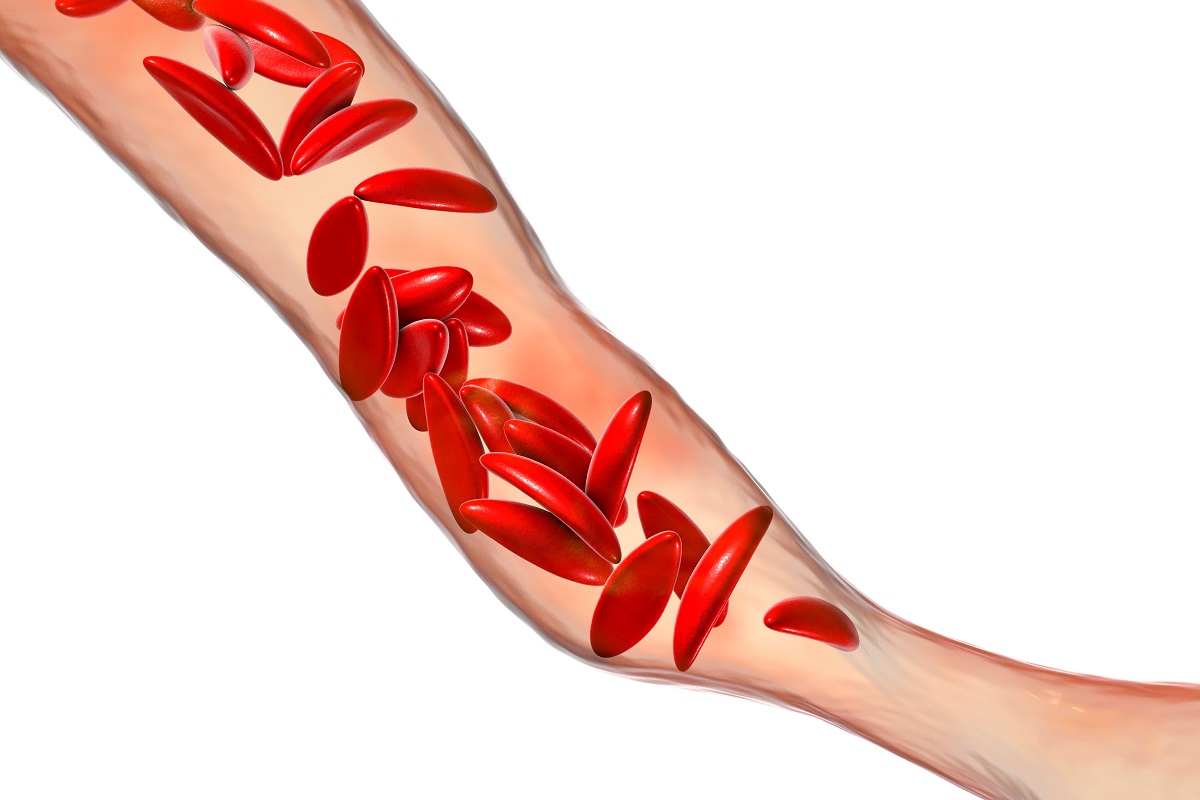
A sickle cell crisis can be scary, but new gene therapy is showing great promise. It might even cure the condition. This crisis happens when sick red blood cells block a blood vessel.
The FDA has approved innovative gene therapies like Casgevy and Lyfgenia. These breakthroughs are transforming sickle cell anemia treatment, offering hope for lasting relief from painful symptoms and reducing the need for frequent transfusions.
With these advancements, patients and families now have real hope for a brighter, healthier future.
It’s important for patients and healthcare providers to understand sickle cell crisis. This crisis happens when sickle-shaped red blood cells block small blood vessels. This leads to pain and tissue damage.
Managing sickle cell disease needs a full approach. This includes good sickle cell treatment and sickle cell disease medication. Each person’s experience with crises is different, so care must be tailored.
During a crisis, sickle-shaped red blood cells can cause a variety of symptoms. These can range from mild to severe. Symptoms include:

We aim to give the best care to those with sickle cell disease. This means access to advanced sickle cell disease medication and therapies. Our goal is to lessen the number and severity of crises.
Sickle cell disease affects millions globally, impacting their quality of life. In England, over 15,000 people live with it. The numbers worldwide are even higher. We’re working to make care better and more accessible.
People with sickle cell disease need lifelong sickle cell treatment. They get help from a team of healthcare professionals at sickle cell centers. Our aim is to provide top-notch care and support for patients from around the world.
While finding a sickle cell disease cure is key, current treatments are vital for better patient care. We’re dedicated to delivering the best care possible.
Traditional treatments for sickle cell anemia have been key in managing this condition. They help ease symptoms, prevent complications, and improve life quality for patients.
Pain management is vital in treating sickle cell anemia. Effective pain relief comes from a mix of medications. This includes NSAIDs, opioids, and other painkillers. We create pain management plans that fit each patient’s needs, working with a team of healthcare experts.
Hydroxyurea helps reduce painful crises and may lower blood transfusion needs. It boosts fetal hemoglobin, reducing sickled red blood cells. We use hydroxyurea for many patients, watching its effects and side effects closely.

Blood transfusions are key in treating sickle cell anemia. They lower the risk of complications like stroke by reducing sickled red blood cells. We manage transfusions to avoid risks like iron overload and ensure blood compatibility.
Hydration and oxygen therapy are vital in managing sickle cell anemia. Adequate hydration prevents dehydration, which can trigger crises. Oxygen therapy boosts oxygen to tissues, easing pain and reducing crisis severity. We teach patients about staying hydrated and using oxygen therapy when needed.
These traditional treatments have evolved to better manage sickle cell anemia. Though they have their limits, they are vital in caring for patients with this condition.
The FDA approved two groundbreaking gene therapies in December 2023. This is a big step forward in treating sickle cell disease. It brings hope to those suffering, promising a cure and a life without painful crises.
Casgevy is the first CRISPR-based gene therapy. It has shown great promise in clinical trials. CRISPR technology edits genes precisely, aiming to cure sickle cell disease. Over 88% of patients in trials were free from severe complications for over a year.
This therapy edits stem cells to make healthy red blood cells. This reduces painful crises in sickle cell disease. It’s seen as a major breakthrough in gene therapy.
Lyfgenia is the second gene therapy approved in 2023. It uses a lentiviral vector to deliver a healthy beta-globin gene to stem cells. This approach aims to reduce vaso-occlusive crises in sickle cell disease.
Clinical trials showed a significant drop in crisis frequency for patients. Lyfgenia offers another treatment option, giving hope for a life without sickle cell disease complications.
Casgevy and Lyfgenia are big steps forward in sickle cell disease treatment. Casgevy edits genes with CRISPR, while Lyfgenia uses a lentiviral vector. Understanding their differences and similarities is key to their impact.
The FDA’s press announcement calls these approvals a significant milestone. They offer new hope for patients and families with sickle cell disease.
Choosing patients for these therapies involves a detailed evaluation. This includes medical history, current health, and treatment suitability. The treatment process includes stem cell collection and infusion of modified cells.
These gene therapies could change lives for sickle cell disease patients. It’s important to keep monitoring their outcomes and make them available to those who need them most.
Sickle cell disease treatment has seen a new era with gene therapies. But, the cost and accessibility are big challenges. The FDA approvals of Casgevy and Lyfgenia have brought hope to patients. Yet, the economic impact of these treatments is huge.
The cost of gene therapies for sickle cell anemia is very high, from $2 to $3 million per patient. This is a big challenge for many patients and healthcare systems around the world. The financial burden is not just a one-time cost; it involves long-term care and management.
Despite the high costs, the market for sickle cell disease treatments is expected to grow a lot. By 2032, it’s projected to reach $8.81 billion. This growth is driven by advancements in gene therapy and increasing demand for effective treatments.
To make treatments more accessible, many global initiatives are underway. These include efforts by healthcare organizations, governments, and pharmaceutical companies. Patient assistance programs and insurance coverage are critical components of these initiatives.
Insurance coverage for gene therapies varies a lot. Patient assistance programs are being developed to help. These programs aim to reduce the financial burden on patients and their families.
We understand that the economic aspects of sickle cell disease treatment are complex. As we move forward, it’s important to keep addressing the challenges of cost and accessibility. We must also keep advancing the field of gene therapy.
The future of sickle cell disease treatment is on the verge of a big change. Gene therapies like Casgevy and Lyfgenia are leading the way. These new treatments bring hope for a cure, changing the sickle cell disease cure scene.
At Liv Hospital, we aim to provide top-notch healthcare for international patients. Our goal is to be a leader in medical care, always improving and staying true to our values. The future of sickle cell treatment looks bright, with new research and therapies on the horizon.
The transforming landscape of sickle cell treatment is about more than just new treatments. It’s also about making sure everyone can get the care they need. We’re working hard to make these advancements available to all, so everyone can get the best care possible.
Sickle cell disease is a genetic disorder that affects hemoglobin production. This causes red blood cells to be misshapen and block small blood vessels. Traditional treatments include pain management, hydroxyurea therapy, blood transfusions, and hydration and oxygen therapy.Recently, gene therapies like Casgevy and Lyfgenia have been approved. They offer a chance for a cure.
Gene therapies like Casgevy and Lyfgenia have shown great promise. They modify the genes responsible for the condition. This allows patients to produce healthy red blood cells and reduces painful crises.
Casgevy and Lyfgenia address the root cause of sickle cell disease. They offer a cure by correcting the genetic mutation. Traditional treatments like pain management only alleviate symptoms.
The cost of gene therapies like Casgevy and Lyfgenia is between $2-3 million per treatment. Efforts are being made to make these treatments more accessible. This includes improving insurance coverage and patient assistance programs.
Yes, there are global initiatives to improve access to sickle cell disease treatments. These initiatives aim to increase awareness, improve diagnosis, and make treatments more affordable. Market growth is expected to reach $8.81 billion by 2032, which may help drive down costs.
Gene therapies like Casgevy and Lyfgenia have shown great promise in potentially curing sickle cell disease. While they are not 100% effective for everyone, they offer a chance for patients to live without recurrent crises. This significantly improves their quality of life.
The future of sickle cell disease treatment is rapidly evolving with the advent of gene therapies. As research continues and more treatments become available, patients can expect improved outcomes and potentially curative options. We are committed to delivering world-class healthcare with support for international patients, ensuring access to the best possible care.
Subscribe to our e-newsletter to stay informed about the latest innovations in the world of health and exclusive offers!
WhatsApp us